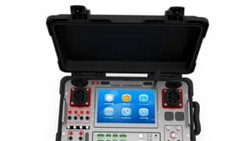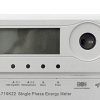The critical change value indicates the maximum amount of change allowed in the meter's energy registers during disturbance tests without any current flowing in the meter's current circuits.
Whenever you see that the test evaluation has to be done according to the acceptance criteria B in the edition 2 of IEC 62052-11, you need to check the critical values at least for the active- and reactive SUM registers.
You can only do this evaluation when the register resolution is high enough. Preferable you will read the registers by PC via the optical interface. Meters without interface must have a possibility to switch the registers temporary to a high resolution mode.

You can do the calculation manually, with your slide rule or you use the calculator below.
| Critical change value calculator | |
|---|---|
| elements m | |
| nominal voltage Un | |
| maximum current Imax | |
| Formula | x = 10-6 * m * Un * Imax |
| maximum allowed change: | |
What about the elements?
This question comes regularly up. To keep it simple:
Single phase meters: one element
Three-phase three wire meters: two elements
Three-phase four wire meters: three elements
Thank you for reading and "Happy Testing!"
Editor's note: This article was originally published in August 2020 and has been updated for comprehensiveness.





All comments are moderated before being published. Inappropriate or off-topic comments may not be approved.